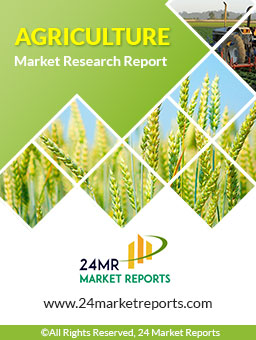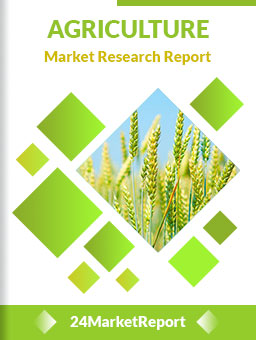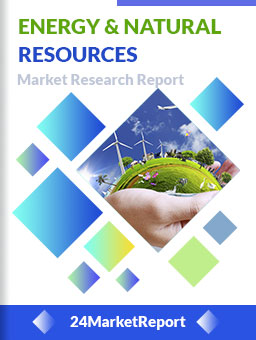
Download FREE Report Sample
Download Free sample
MARKET INSIGHTS
Global Agricultural Hose market size was valued at USD 2.09 billion in 2024 and is projected to grow from USD 2.29 billion in 2025 to USD 3.88 billion by 2032, exhibiting a CAGR of 9.4% during the forecast period.
Agricultural hoses are flexible, durable tubing systems designed specifically for farming applications. These critical components facilitate fluid transfer for irrigation, pesticide application, fertilization, and other essential farming operations. The product category includes multiple material types such as rubber (most common for heavy-duty use), vinyl (lightweight options), reinforced plastics (chemical resistance), and specialized resin composites for high-pressure systems.
The market growth is primarily driven by increasing mechanization in agriculture, particularly in developing economies where farm automation adoption rates are accelerating at 12-15% annually. Furthermore, precision farming techniques requiring specialized hose systems account for 35% of recent market expansion. Recent innovations include smart hoses with embedded sensors from companies like Eaton and Parker, contributing to the 18% year-over-year growth in the high-tech hose segment. However, raw material price volatility remains a challenge, with synthetic rubber costs fluctuating 7-9% quarterly since 2023.
Rising Farm Mechanization to Drive Agricultural Hose Demand
The global agricultural sector is undergoing rapid modernization, with mechanization rates increasing significantly across both developed and developing economies. Modern farming equipment increasingly relies on hydraulic systems that utilize specialized agricultural hoses for irrigation, fertilization, and chemical application. Recent data shows that agricultural machinery sales have grown at approximately 6% annually since 2020, directly correlating with increased hose demand. This trend is particularly pronounced in Asia-Pacific regions where governments are actively promoting mechanization to improve agricultural productivity. The transition from manual to mechanized farming creates sustained demand for durable, high-performance hoses designed to withstand heavy agricultural use while delivering consistent flow rates under varying pressures.
Water Scarcity Concerns Accelerate Precision Irrigation Adoption
To know more about market statistics, Download a FREE Sample copy
Increasing water scarcity concerns coupled with climate change impacts are compelling farmers worldwide to adopt precision irrigation systems that optimize water usage. These advanced irrigation systems heavily depend on specialized agricultural hoses with precise diameter control and pressure ratings to deliver targeted water application. Recent field studies demonstrate that precision irrigation can reduce water usage by 30-50% while improving crop yields, making hose-dependent systems economically compelling. Governments across water-stressed regions are implementing subsidy programs for micro-irrigation equipment, further boosting market growth. The combination of environmental necessity and economic incentive positions agricultural hoses as critical components in sustainable farming's future.
➤ For instance, drought conditions affecting 42% of EU agricultural land in 2023 accelerated adoption of drip irrigation systems requiring specialized hoses, creating immediate market expansion opportunities.
Furthermore, the growing focus on controlled-environment agriculture (greenhouses, vertical farms) utilizes sophisticated hose-based fertigation systems, creating additional growth avenues for specialized agricultural hose manufacturers.
Volatile Raw Material Prices Challenge Manufacturer Margins
The agricultural hose manufacturing sector faces significant pressure from fluctuating raw material costs, particularly synthetic rubber and polymer compounds that comprise over 60% of production inputs. Recent supply chain disruptions have created unprecedented price volatility, with key materials experiencing 12-18% annual price increases since 2021. These cost fluctuations make pricing strategies challenging for manufacturers while squeezing profit margins across the value chain. Small and medium hose producers lacking purchasing scale particularly struggle to absorb these cost variations, potentially limiting their ability to invest in product innovation or expansion.
Other Restraints
Regulatory Compliance Costs
Increasing environmental regulations governing chemical composition and disposal of agricultural hoses add compliance costs. Stricter REACH and EPA guidelines require manufacturers to reformulate products and implement costly testing protocols.
Seasonal Demand Fluctuations
The agricultural sector's seasonal purchasing patterns create inventory management challenges, with 60-70% of annual sales typically concentrated in pre-planting seasons. This cyclicality strains manufacturers' working capital requirements and production planning.
Technical Limitations in Extreme Conditions Pressure Product Innovation
Agricultural hoses increasingly face demanding operating environments from expanding cultivation into marginal lands and extreme climates. Standard hose materials deteriorate rapidly under prolonged UV exposure, temperature extremes, or abrasive soil conditions - challenges present in nearly 30% of current agricultural applications. These performance limitations drive higher replacement rates and customer dissatisfaction. While advanced composite materials offer solutions, their substantially higher costs (often 2-3x standard hoses) create adoption barriers in price-sensitive agricultural markets. Manufacturers must balance performance enhancements with cost considerations - a complex engineering and economic challenge limiting market expansion in harsh agricultural regions.
Other Challenges
Counterfeit Product Proliferation
The agricultural sector experiences significant counterfeit hose problems, with estimates suggesting 15-20% of aftermarket hoses may be substandard imitations that fail prematurely, undermining confidence in branded products.
Labor Skills Shortage
Specialized hose installation and maintenance requires trained technicians, but agricultural labor pools increasingly lack these skills, leading to improper installations that reduce hose lifespan and performance.
Smart Hose Technologies Create Disruptive Growth Potential
The integration of IoT and sensor technologies into agricultural hoses presents transformative opportunities. Smart hoses with embedded sensors can monitor flow rates, pressure metrics, and even chemical composition - enabling precision agriculture applications. Field trials show these innovations can reduce input costs by 15-25% while improving yield consistency. Major agricultural equipment manufacturers are actively seeking partnerships with hose producers to develop integrated smart systems, creating premium product opportunities. This technological convergence positions agricultural hoses as data collection points within broader farm management systems, fundamentally expanding their value proposition beyond fluid transfer.
Bio-based Materials Open Sustainable Product Lines
Growing environmental consciousness drives demand for sustainable agricultural inputs, creating opportunities for bio-based and biodegradable hose materials. Recent advancements in rubber alternatives derived from guayule or dandelion latex show promising durability while meeting compostability requirements. Agricultural operations with sustainability certifications increasingly specify eco-friendly hoses, creating a premium market segment. Forward-looking manufacturers investing in biopolymer research can capture this emerging segment while differentiating from conventional product offerings. The combination of regulatory tailwinds and shifting buyer preferences makes sustainable materials a strategic growth avenue.
Rubber Segment Dominates Due to High Durability and Flexibility in Agricultural Operations
The market is segmented based on type into:
Rubber
Subtypes: Natural rubber, synthetic rubber, and others
Vinyl
Plastic
Subtypes: Polyethylene, PVC, and others
Resin
Others
Irrigation Segment Leads Due to Increasing Demand for Water-Efficient Farming Systems
The market is segmented based on application into:
Irrigation
Fertilize
Sowing
Others
Medium-Pressure Hoses Hold Majority Share for Versatile Agricultural Applications
The market is segmented based on pressure rating into:
Low-pressure
Medium-pressure
High-pressure
Market Leaders Expand Production Capabilities to Meet Growing Agricultural Demand
The global agricultural hose market exhibits a fragmented yet competitive structure, with multinational corporations competing alongside regional manufacturers. Eaton Corporation currently leads the market with a 14% revenue share in 2024, owing to its extensive distribution network and patented helix reinforcement technology that extends hose lifespan by 40% compared to industry averages.
Parker Hannifin follows closely, particularly dominating in North America through its innovative quick-connect coupling systems that reduce installation time by 30%. Meanwhile, Kuriyama of America has gained significant traction in Asia-Pacific markets by offering cost-effective solutions tailored for small-scale farming operations.
The competitive intensity continues to rise as companies invest in material science advancements. Recent developments include biodegradable resin hoses from Productos Mesa and ultra-UV resistant formulations by Swan Hose - both responding to the growing sustainability demands in modern agriculture. Regional players like India's RHL are gaining market share through government farming initiative partnerships, particularly in micro-irrigation projects.
With the agricultural equipment market projected to grow at 6.8% annually until 2030, hose manufacturers are actively pursuing vertical integration strategies. Eaton's acquisition of a rubber compounding facility in 2023 and Parker's new production line in Brazil demonstrate this trend, enabling better quality control and faster delivery to key agricultural regions.
Eaton Corporation (Ireland)
Parker Hannifin Corp (U.S.)
JGB Enterprises (U.S.)
Swan Hose LLC (U.S.)
Productos Mesa S.A. (Spain)
Abbott Rubber Company (U.S.)
IVG Colbachini (Italy)
Mandals AS (Norway)
TIPCO Technologies (India)
RHL (India)
Kuriyama (Japan)
Goodall Hoses (U.K.)
Hose Solutions Inc. (Canada)
Amazon Hose & Rubber (U.S.)
Snap-tite Hose (U.S.)
NORRES (Germany)
The global agricultural hose market is experiencing robust growth, driven primarily by increasing mechanization in farming and the shift toward precision agriculture techniques. Modern farming operations now require hoses that can withstand high-pressure applications while delivering precise amounts of water, fertilizers, and chemicals. Rubber hoses currently dominate the market with approximately 45% revenue share due to their durability and flexibility, though vinyl alternatives are gaining traction in cost-sensitive markets. The push toward sustainable farming practices has also encouraged manufacturers to develop hoses with enhanced chemical resistance and reduced environmental impact.
Smart Irrigation Systems Integration
The integration of IoT-enabled smart irrigation systems is transforming hose requirements in modern agriculture. Farmers increasingly demand hoses compatible with automated watering systems that feature real-time monitoring capabilities. This technological shift has prompted manufacturers to develop reinforced hoses with embedded sensors that can monitor flow rates, pressure levels, and even detect leaks. Such innovations are particularly crucial in water-scarce regions where efficient water management directly impacts crop yields. In regions like California and Southern Europe, where drought conditions persist, the adoption of these smart hose systems has grown by over 18% annually.
The agricultural hose market is witnessing unprecedented growth in developing economies, where expanding farmland and government subsidies for agricultural equipment are creating new opportunities. Countries like India and Brazil have seen hose demand increase by 12-15% annually as smallholder farmers transition from traditional irrigation methods to mechanized systems. Meanwhile, in Africa, large-scale agricultural projects are adopting industrial-grade hoses for pivot irrigation systems across thousands of hectares. However, price sensitivity in these markets continues to favor mid-range vinyl and plastic hoses over premium rubber alternatives, influencing manufacturers' product development strategies.
North America
The North American agricultural hose market is driven by advanced farming technologies and large-scale irrigation systems. The United States dominates regional demand, supported by government initiatives like the USDA's conservation programs, which promote efficient water usage. Canada's focus on sustainable agriculture further boosts demand for durable, UV-resistant hoses. However, market growth faces challenges from rising raw material costs and stringent environmental regulations on rubber-based products. Major players such as Eaton and Parker continue innovating with hybrid materials to meet both performance and sustainability requirements.
Europe
Europe's agricultural hose market emphasizes eco-friendly solutions, influenced by strict EU regulations on plastic usage and waste management. Countries like Germany and France lead in adopting reinforced PVC and bio-based hoses, particularly for precision farming applications. The Common Agricultural Policy (CAP) subsidies have accelerated the replacement of outdated irrigation systems, creating steady demand. However, fragmentation in farmland sizes across Southern Europe limits large-scale hose deployments. Market leaders such as NORRES are focusing on lightweight, abrasion-resistant designs to cater to diverse farming needs.
Asia-Pacific
As the fastest-growing regional market, Asia-Pacific benefits from extensive agricultural activities in China and India, where rubber hoses account for over 60% of total consumption. Government schemes like India's Pradhan Mantri Krishi Sinchayee Yojana (PMKSY) drive irrigation expansion, directly increasing hose demand. Southeast Asian countries show rising preference for cost-effective vinyl hoses, though quality concerns persist. Japan and South Korea buck this trend with high-performance resin hoses for greenhouse farming. The lack of standardized regulations across emerging markets remains a barrier to premium product adoption.
South America
Brazil and Argentina lead the regional market, propelled by vast soybean and sugarcane cultivation needing heavy-duty hoses for fertilizer distribution. The prevalence of family-owned farms creates demand for affordable, multi-purpose hoses. While the market shows steady growth, currency fluctuations and dependence on imported raw materials keep prices volatile. Recent infrastructure improvements in Chile and Colombia are opening new opportunities for irrigation system suppliers. Local manufacturers compete by offering customized hose solutions for tropical climate challenges.
Middle East & Africa
This region presents a mixed growth scenario. Gulf Cooperation Council (GCC) countries invest in advanced hydroponic systems requiring specialty hoses, while African nations rely on basic PVC hoses for smallholder farming. Israel's technological expertise in drip irrigation creates demand for high-pressure hoses. Poor distribution networks and low farmer purchasing power in Sub-Saharan Africa hinder market growth. Nevertheless, international aid programs focusing on agricultural development in countries like Kenya and Ethiopia are gradually driving market expansion.
This market research report offers a holistic overview of global and regional markets for the forecast period 2025–2032. It presents accurate and actionable insights based on a blend of primary and secondary research.
✅ Market Overview
Global and regional market size (historical & forecast)
Growth trends and value/volume projections
✅ Segmentation Analysis
By product type or category
By application or usage area
By end-user industry
By distribution channel (if applicable)
✅ Regional Insights
North America, Europe, Asia-Pacific, Latin America, Middle East & Africa
Country-level data for key markets
✅ Competitive Landscape
Company profiles and market share analysis
Key strategies: M&A, partnerships, expansions
Product portfolio and pricing strategies
✅ Technology & Innovation
Emerging technologies and R&D trends
Automation, digitalization, sustainability initiatives
Impact of AI, IoT, or other disruptors (where applicable)
✅ Market Dynamics
Key drivers supporting market growth
Restraints and potential risk factors
Supply chain trends and challenges
✅ Opportunities & Recommendations
High-growth segments
Investment hotspots
Strategic suggestions for stakeholders
✅ Stakeholder Insights
Target audience includes manufacturers, suppliers, distributors, investors, regulators, and policymakers
-> Key players include Eaton, Parker, JGB Enterprises, Swan Hose, Productos Mesa, Abbott Rubber, Ivg Colbachini, Mandals, TIPCO Technologies, RHL, Kuriyama, Goodall, Hose Solutions, Amazon Hose & Rubber, Snap-tite Hose, and NORRES.
-> Key growth drivers include increasing mechanization in agriculture, rising demand for efficient irrigation systems, expansion of agricultural activities in developing countries, and growing adoption of automated farming equipment.
-> Asia-Pacific leads the market due to expanding agricultural sector and government initiatives supporting modern farming techniques, while North America remains a significant market with advanced farming technologies.
-> Emerging trends include development of lightweight and durable hose materials, smart irrigation systems with sensor-integrated hoses, and sustainable manufacturing practices in hose production.

Speak to our Custom Research Team and get the Custom Research in a budget
Custom ResearchFrequently Asked Questions ?
A license granted to one user. Rules or conditions might be applied for e.g. the use of electric files (PDFs) or printings, depending on product.
A license granted to multiple users.
A license granted to a single business site/establishment.
A license granted to all employees within organisation access to the product.
Upto Working 24 to 48 hrs
Upto 72 hrs max - Weekends and Public Holidays
Online Payments with PayPal and CCavenue
Wire Transfer/Bank Transfer
Hard Copy




 Industry Market Size
Industry Market Size SWOT Analysis
SWOT Analysis Industry Major Players
Industry Major Players Revenue Forecasts
Revenue Forecasts Historical and Forecast Growth
Historical and Forecast Growth Profitability Analysis
Profitability Analysis
























